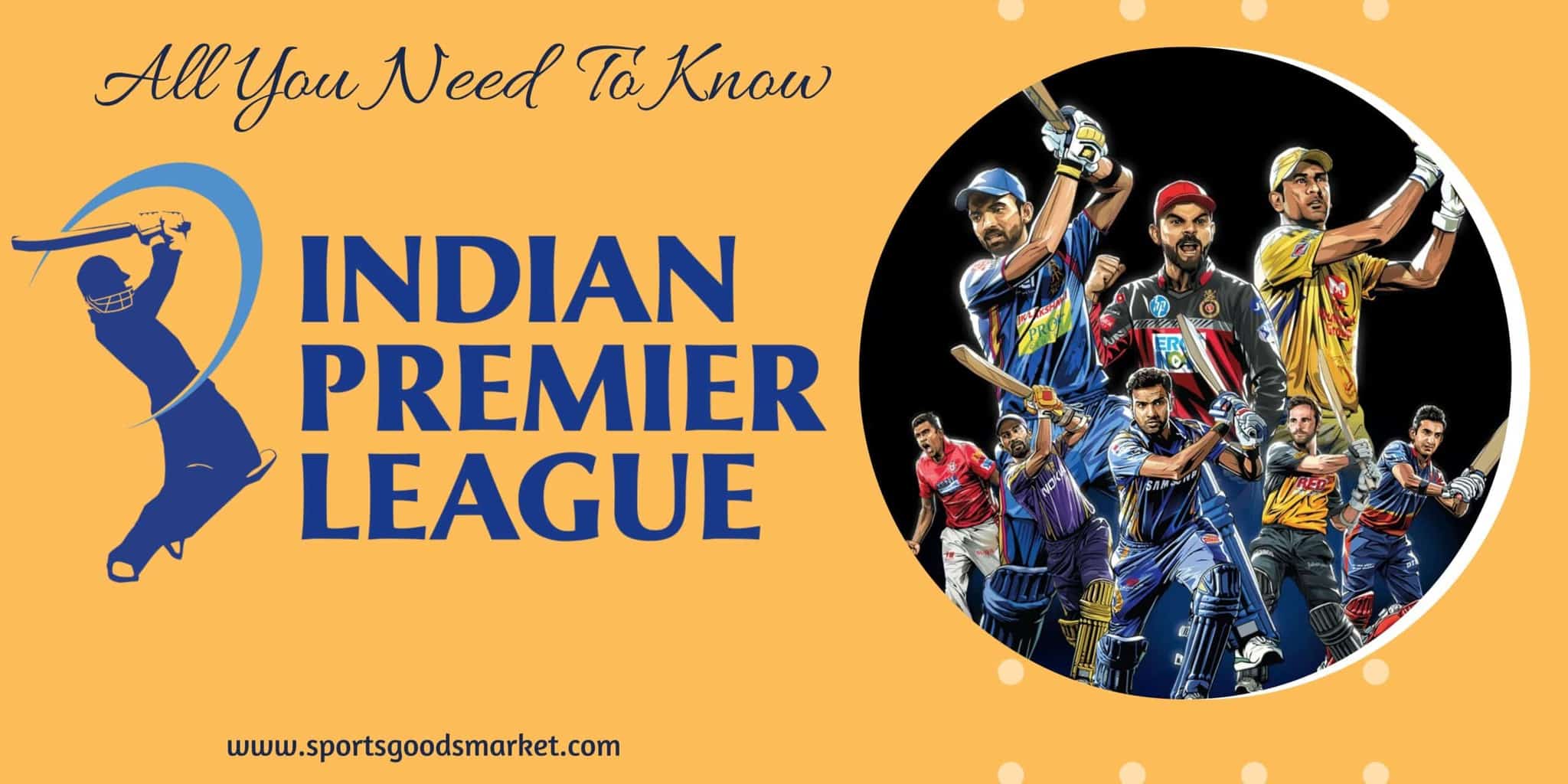Indian Premier League (IPL) is a professional T20 cricket league of international repute played from March through May every year and competed by eight teams representing eight different cities in India. The league was founded by the Board of Control for Cricket in India (BCCI) in 2008. IPL is the most entertained cricket league in the world and in 2014 ranked sixth by average attendance among all sports leagues. In 2010, it became the first sporting event that was broadcast live on YouTube. In 2019, IPL created a brand value of ₹475 billion (US$6.7 billion), according to Duff & Phelps. As per BCCI, the 2015 season contributed ₹11.5 billion (US$160 million) to the GDP of the Indian economy. There have been twelve seasons of the IPL so far. The current winners are the Mumbai Indians, winning the 2019 edition of IPL. Due to the COVID-19 pandemic, the venue for the 2020 season has been shifted and games are now taking place in the United Arab Emirates playing between 19th September through 10th November 2020.
Background and Foundation of IPL
In 2007, a short form of T20 league was founded as the Indian Cricket League (ICL) funded by Zee Entertainment Enterprises. It was not recognized by the Board of Control for Cricket in India (BCCI) and the International Cricket Council (ICC). Thus, considered the league of rebels among different cricketing boards and members of ICC. This annoyed the BCCI and they increased the prize money in their own domestic tournaments and also imposed lifetime bans on players joining the ICL.
In the same year later, BCCI announced the launch of a franchise-based T20 cricket league and named as Indian Premier League (IPL) that started in April 2008. Lalit Modi the then BCCI president was the mastermind behind this idea and designed the complete idea including its format, the prize money, franchise revenue system, and squad composition rules. It was also publicized that the IPL would be run by a seven-man governing council composed of former India players and BCCI officials and the top two teams of the IPL would qualify for that year’s Champions League T20.
In order to determine the owners for the new league, the first auction was held on 24 January 2008 with a total base price of the franchises costing around $400 million. After the auction, the winning bidders were announced, and the cities in which teams will be based in: Bangalore, Chennai, Delhi, Hyderabad, Jaipur, Kolkata, Mohali, and Mumbai. At the end of the auction, the franchises were all sold for a total of $723.59 million.
In March 2010, two new franchises were added to the IPL– Pune Warriors India and Kochi Tuskers Kerala and joined the competition in the fourth season in 2011. Sahara Adventure Sports Group bought the Pune franchise for $370 million while Rendezvous Sports World bought the Kochi franchise for $333.3 million. Unfortunately, in November 2011, the Kochi Tuskers Kerala was terminated following the breaching of BCCI terms and conditions. In next season the team was unable to find the new owners and then BCCI announced the termination of another franchise, the champions of 2009 (Deccan Chargers). The new auction was held in October 2012 with the replacement owner as Sun TV Network winning the bid for the Hyderabad franchise. The franchise was renamed Sunrisers Hyderabad. In another incident Pune Warriors India withdrew from the league in May 2013 over financial differences, leading to the official termination of the franchisee by the BCCI.
In June 2015, the two-time champions (Chennai Super Kings), and one-time champion (Rajasthan Royals), were suspended for two seasons following their role in a match-fixing and betting scandal. Again, in December 2015 auction, Pune and Rajkot were to replace Chennai and Rajasthan for the next two seasons. The two teams were the Rising Pune Supergiants and the Gujarat Lions.
Organization of the Indian Premier League (IPL)
Presently there are eight teams and all teams play each other twice on home ground, and away from the home city (round-robin format) in the league phase. At the conclusion of the league phase, the top four teams qualify for the playoffs. The top two teams from the league phase will play against each other in the first Qualifying match, with the winner going straight to the final and the loser getting another chance to qualify for the final by playing the second Qualifying match. Meanwhile, the third and fourth teams from the league phase play against each other in an eliminator match, and the winner from that match will play the loser from the first Qualifying match. The winner of the second Qualifying match will move into the final to play the winner of the first Qualifying match in the IPL Final, where the winner will be crowned the Indian Premier League champions for that year.
How are IPL Players Acquired?
There are three ways to acquire players: the annual player auction, trading players with other teams within the trading window, and signing replacements for unavailable players. Players sign up for the auction and also set their base price, and are bought by the franchise in the highest bids for them. Unsold players in the auction are eligible for the replacement. Within the trading windows, players can only be traded by their consent, and the franchise paying the difference, if any, between the old and new contracts. If the new contract is worth more than the older one, the difference is shared between the player and the franchise selling the player. There are generally three trading windows—two before the auction and one after the auction but before the start of the tournament. Players cannot be traded outside the trading windows or during the tournament, whereas replacements can be signed before or during the tournament.
Some of the team composition rules (as of 2020 season) are as follows:
- The squad strength must be between 18 and 25 players, with a maximum of 8 overseas players.
- The salary cap of the entire squad must not exceed ₹850 million (US$12 million).
- Under-19 players cannot be picked unless they have previously played first-class or List A cricket.
- A team can play a maximum of 4 overseas players in their playing eleven.
As per a survey in 2015 by Sporting Intelligence and ESPN Magazine, the average IPL salary when pro-rated is US$4.33 million per year. It is the second-highest among all sports leagues in the world. The players in the IPL are only contracted for the duration of the tournament (less than two months, unlike other sports leagues in which players are contracted by a single team for the entire year. The below table showing the average annual income from IPL.
The 2019 edition of the IPL offered total prize money of ₹500 million (US$7.0 million), with the winning teams’ prize ₹200 million (US$2.8 million). The first and second runners up received ₹125 million (US$1.8 million) and ₹87.5 million (US$1.2 million) respectively, the fourth team also winning ₹87.5 million (US$1.2 million). The other teams in the competition were not awarded any prize money.
Former Teams which were dissolved later
| Team | City | Home Ground | Debut | Dissolved | Owner |
| Deccan Chargers | Hyderabad, Telangana | Rajiv Gandhi International Stadium | 2008 | 2012 | Gayatri Reddy, T Venkattram Reddy |
| Kochi Tuskers Kerala | Kochi, Kerala | Jawaharlal Nehru Stadium | 2011 | 2011 | Rendezvous Consortium |
| Pune Warriors India | Pune, Maharashtra | DY Patil Stadium, Maharashtra Cricket Association Stadium | 2011 | 2013 | Subrata Roy |
| Rising Pune Supergiant | Pune, Maharashtra | Maharashtra Cricket Association Stadium | 2016 | 2018 | Sanjiv Goenka |
| Gujarat Lions | Rajkot, Gujarat | Saurashtra Cricket Association Stadium | 2016 | 2018 | Keshav Bansal |
Present Teams in IPL Playing in 2020
| Team | City | Home Ground | Debut | Owner |
| Chennai Super Kings | Chennai, Tamil Nadu | M. A. Chidambaram Stadium | 2008 | India Cements |
| Delhi Capitals | Delhi, NCR | Arun Jaitley Stadium | 2008 | GMR Group and JSW Group |
| Kings XI Punjab | Mohali (Chandigarh), Punjab | PCA Stadium, Mohali | 2008 | Mohit Burman, Ness Wadia, Preity Zinta and Karan Paul |
| Kolkata Knight Riders | Kolkata, West Bengal | Eden Gardens | 2008 | Red Chillies Entertainment and Mehta Group |
| Mumbai Indians | Mumbai, Maharashtra | Wankhede Stadium | 2008 | Reliance Industries |
| Rajasthan Royals | Jaipur, Rajasthan | Sawai Mansingh Stadium | 2008 | Manoj Badale |
| Royal Challengers Bangalore | Bengaluru, Karnataka | M. Chinnaswamy Stadium | 2008 | United Spirits |
| Sunrisers Hyderabad | Hyderabad, Telangana | Rajiv Gandhi International Cricket Stadium | 2013 | Sun TV Network |
Sponsors of IPL
From 2008 to 2012, the title sponsor was DLF, India’s largest real estate giant who had secured the rights with a bid of ₹200 crores (US$28 million) for five seasons. After the 2012 season, PepsiCo bought the title sponsorship rights for ₹397 crores (US$56 million) for the subsequent five seasons.
However, the company terminated the contract two years earlier in October 2015, due to probable cause of franchise suspension of Chennai and Rajasthan from the league for two years. After that, BCCI then transferred the title sponsorship rights to Chinese smartphone manufacturer VIVO for ₹200 crores (US$28 million) for the remaining two seasons.
In 2017, VIVO retained the title sponsorship rights for the next five seasons(i.e., 2018–2022) in a winning bid of ₹2,199 crores (US$310 million), the deal was supposed to be more expensive than Barclays’ Premier League title sponsorship contract for 2013-2016. In August 2020, VIVO got out of the title sponsorship rights due to the military stand-off between India and China at the Line of Actual Control in July 2020. It was also reported that the withdrawal was a result of VIVO’s market loss due to the COVID-19 pandemic and intended to return as title sponsors for the following 3 years. Therefore, in 2020 Dream 11 has bagged the rights for IPL 2020 title sponsor for the amount of ₹220 core.
Economic Value Created by IPL
The league has grown very rapidly in value over the years and is seen in a series of jumps in value creation from one season to next season. In 2016, IPL was valued by financial experts at US$4.16 billion, and the number grew to $5.3 billion in 2017, and $6.13 billion in 2018. In its report, Duff and Phelps said that one of the most contributing factors in its growth was signing a broadcasting partner (Star India Private Limited), which engaged more viewers and transmitted to regional channels in 8 different languages, instead of the previous broadcaster with the limited transmission in terms of language (only English commentary), the diversity of India has helped IPL to achieve this phenomenal growth. Another report conducted by Brand Finance: London-based company, the IPL has seen its business value growth by 37% to an all-time high of $5.3 billion. In its 11th edition, the Indian Premier League is here to stay, the league has fulfilled its promise financially for the players, franchisees, sponsors and India as a whole. Encouraging a strong desire among different stakeholders to appropriately value it and to ensure continuous development, management, and team owners will have to explore innovative ways of engaging fans, clubs, and sponsors towards the game.
IPL Broadcasting Rights
The broadcasting rights were initially held by a partnership between Sony Pictures Networks and World Sport Group, under a ten-year contract that was valued at US$1.03 billion. Sony was responsible for domestic television, while WSG was handling international distribution.
The initial plan was for 20% that would go to the IPL, 8% as prize money and 72% would be distributed to the franchisees from 2008-2012. As of the 2016 season, Sony MAX, Sony SIX, and Sony ESPN served as the domestic broadcasters of the IPL. Sony MAX broadcasted in Hindi and Sony SIX broadcasted in the Bengali, Tamil, and Telugu languages. Sony ESPN broadcasted English-language feeds. Sony also produced an entertainment-oriented companion talk show, Extraaa Innings T20, which featured analysis and celebrity guests for the IPL.
In September 2017, Star India acquired the global media rights for the IPL under a five-year contract starting in 2018 that was valued at ₹163.475 billion (US$2.55 billion, £1.97 billion), it was a 158% increase over the previous deal, and the most expensive broadcasting rights deal in the history of cricket. IPL sold its rights in packages for domestic television, domestic digital, and international rights; although Sony held the highest bid for domestic television, and Facebook also made a US$600 million bid for domestic digital rights.
The deal became a competitive advantage for Star India by enjoying the monopoly on major cricketing rights in the country, as it is also the rights-holder of ICC competitions and the Indian national team.
The main focus of Star India is on widening the IPL’s appeal with a “core” cricketing audience. Star broadcasted IPL matches live online in India via its video streaming platform Hotstar. Matches are also available on Jio TV and Airtel TV apps on smartphones. Throughout the 2019 season, international streaming viewership on Hotstar saw records, exceeding 10 million concurrent viewers multiple times. The 2019 final broke these records, peaking at 18.6 million concurrent streaming viewers. Due to the league’s popularity, Disney (owner of Star India) decided to launch its streaming service Disney+ (via Hotstar) in India but the services were delayed due to the COVID-19 Pandemic until April 2020 with a short delay.
Conclusion
The Indian Premier League (IPL) brought radical change to the nation’s cricket league by transforming a long-winded ‘gentlemen’s game’ into a thrilling three-hour sports drama and entertainment featuring Bollywood stars. It re-created a new market space known as ‘cricketainment’ where cricket is played and enjoyed in a completely different style from all other cricket games. It unlocked great demand from audiences that were previously ignored by the traditional form of cricket. For Indians, cricket is more than a game, as the dominant sport in India with a huge fanbase and the highest-earning national sport. It’s strong sponsorships and star players generate 60% of cricket revenues worldwide. The inaugural season of 2008 was watched by 200 million Indians on TV and 10 million overseas, overtaking the record 150 million viewers that had previously tuned into football’s English Premier League. The IPL became the world’s sixth-biggest sports league within two seasons.
The BCCI fundamentally shifted the strategy of the cricket industry. It began by re-inventing its strategic focus from competitors to alternatives and from customers to non-customers of the industry. To unlock the biggest demand, the BCCI focused on commonalities not differences among non-customers.
The IPL depicts its distinctive value proposition to cricket viewers as compared to a one-day cricket international match, such as the Cricket World Cup. While the existing cricket leagues followed the same conventional logic as the Cricket World Cup, the value of the IPL diverges from that of the Cricket World Cup by focusing on the fun and thrill of the game. The IPL becomes even more compelling by offering unprecedented value, looking across alternatives like the EPL and Bollywood drama. As a result of creating an unprecedented cricket league, the IPL reached beyond existing demand. IPL turned all non-customers into cricket lovers.

About Author
Shahzada Irfan Bashir is a Researcher in Strategy and Management.
He is currently conducting research on Sports Goods Industry in India. He is passionate about cricket and cricketers. His other interests include fitness, travel, cooking, reading and photography.






